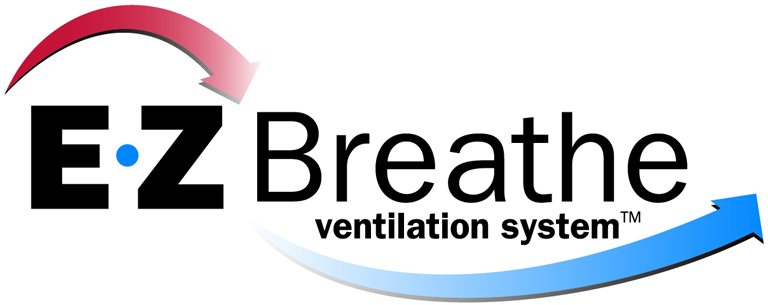Basements are valuable spaces in residential homes, providing additional living, storage, or recreational areas. However, they are also vulnerable to moisture infiltration, leading to a host of problems such as water damage, mold growth, and structural deterioration. Proper basement drainage is essential for managing groundwater, surface water, and other sources of moisture to prevent these issues and maintain a dry, healthy living environment. In this comprehensive guide, we’ll explore the importance of basement drainage, common drainage problems, effective drainage solutions, and tips for implementing a robust drainage system in your basement.
Understanding the Importance of Basement Drainage
Basement drainage refers to the management and removal of excess water from the basement space to prevent water infiltration and accumulation. Proper drainage is crucial for several reasons:
- Preventing Water Damage: Basements are susceptible to water infiltration from various sources, including groundwater seepage, surface runoff, and plumbing leaks. Without adequate drainage, water can penetrate through cracks in the foundation walls or floor, leading to water damage, mold growth, and structural problems.
- Preserving Indoor Air Quality: Excess moisture in the basement can lead to high humidity levels, condensation, and mold growth, which can compromise indoor air quality and pose health risks to occupants. Proper drainage helps control moisture levels and prevent mold-related issues.
- Protecting Property Investment: Water damage in the basement can cause costly repairs and decrease the resale value of the home. By implementing effective drainage solutions, homeowners can protect their property investment and ensure the long-term integrity of their home’s foundation and structure.
Common Basement Drainage Problems
Several factors can contribute to basement drainage problems, including:
- Groundwater Seepage: In areas with high water tables or poor soil drainage, groundwater can seep through the foundation walls or floor, leading to water infiltration and rising dampness in the basement.
- Surface Water Runoff: Improper grading around the home’s foundation or inadequate drainage systems can result in surface water runoff pooling around the basement perimeter, increasing the risk of water infiltration and flooding.
- Plumbing Leaks: Leaking pipes, fixtures, or appliances in the basement can introduce water into the indoor environment, leading to moisture buildup and water damage.
- Condensation: Lack of ventilation, insulation, or air circulation in the basement can lead to condensation buildup on surfaces, contributing to moisture-related problems and mold growth.
Effective Basement Drainage Solutions
Several drainage solutions can be implemented to address basement drainage problems and manage excess water effectively:
Exterior Waterproofing:
- Exterior waterproofing involves applying waterproof coatings, membranes, or sealants to the exterior surface of the foundation walls to prevent water infiltration.
- Additionally, exterior drainage systems such as French drains, curtain drains, or surface grading can be installed around the perimeter of the home to divert surface water away from the foundation.
Interior Drainage Systems:
- Interior drainage systems, such as French drains or interior weeping tile systems, are installed within the basement to collect and channel water to a sump pump or drainage outlet.
- These systems typically consist of perforated pipes or channels installed along the perimeter of the basement floor, surrounded by gravel or drainage matting to facilitate water flow.
Sump Pump Installation:
- Sump pumps are commonly used in conjunction with interior drainage systems to remove collected water from the basement and discharge it safely away from the home.
- A sump pump is installed in a designated sump pit or basin, where it automatically activates to pump water out of the basement when water levels rise above a certain threshold.
Crawl Space Encapsulation:
- For homes with crawl spaces, encapsulation involves sealing off the space with vapor barriers, insulation, and dehumidifiers to prevent moisture buildup and improve indoor air quality.
- This helps prevent moisture infiltration into the basement and reduces the risk of water-related issues such as mold growth and structural damage.
Foundation Repair and Maintenance:
- Addressing cracks, gaps, or damage in the foundation walls or floor is essential for preventing water infiltration and maintaining structural integrity.
- Foundation repair techniques such as crack sealing, epoxy injection, or foundation underpinning may be necessary to correct structural problems and prevent water leakage.
Tips for Implementing a Robust Basement Drainage System
When designing and implementing a basement drainage system, consider the following tips to ensure optimal performance and effectiveness:
- Assess Moisture Sources: Identify and address potential sources of moisture infiltration, including groundwater seepage, surface water runoff, plumbing leaks, and condensation buildup.
- Design for Redundancy: Incorporate multiple drainage solutions and backup systems to provide redundancy and ensure continuous protection against water infiltration and flooding.
- Proper Installation: Ensure that drainage systems, sump pumps, and other components are installed correctly and according to manufacturer specifications to maximize their effectiveness and longevity.
- Regular Maintenance: Schedule regular inspections and maintenance of the basement drainage system, including cleaning, testing, and servicing of sump pumps, drainage channels, and discharge outlets.
- Monitor Performance: Monitor the performance of the basement drainage system regularly, including water levels, pump operation, and moisture levels, to detect and address any issues promptly.
- Professional Consultation: Consult with experienced waterproofing professionals or structural engineers to assess your basement drainage needs and develop a customized drainage plan tailored to your specific requirements.
Basement drainage is essential for preventing water infiltration, managing moisture levels, and protecting the structural integrity of residential homes. By understanding common basement drainage problems, implementing effective drainage solutions, and following best practices for design and maintenance, homeowners can ensure a dry, healthy, and resilient basement environment. Whether through exterior waterproofing, interior drainage systems, sump pump installation, crawl space encapsulation, or foundation repair, investing in basement drainage solutions offers long-term benefits and peace of mind. With proper drainage measures in place, homeowners
Contact the Professionals at EZ Breathe Repair Today! 866-822-7328



